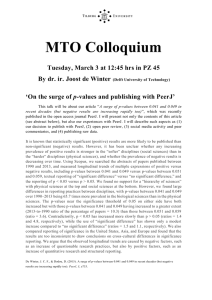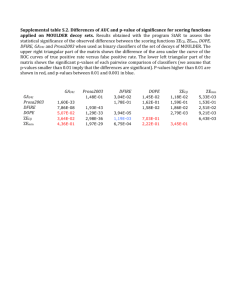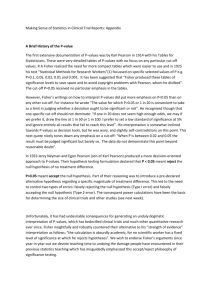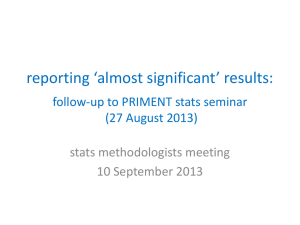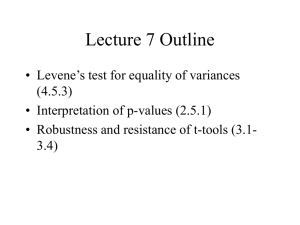Comparison of observed versus expected frequency distributions
advertisement
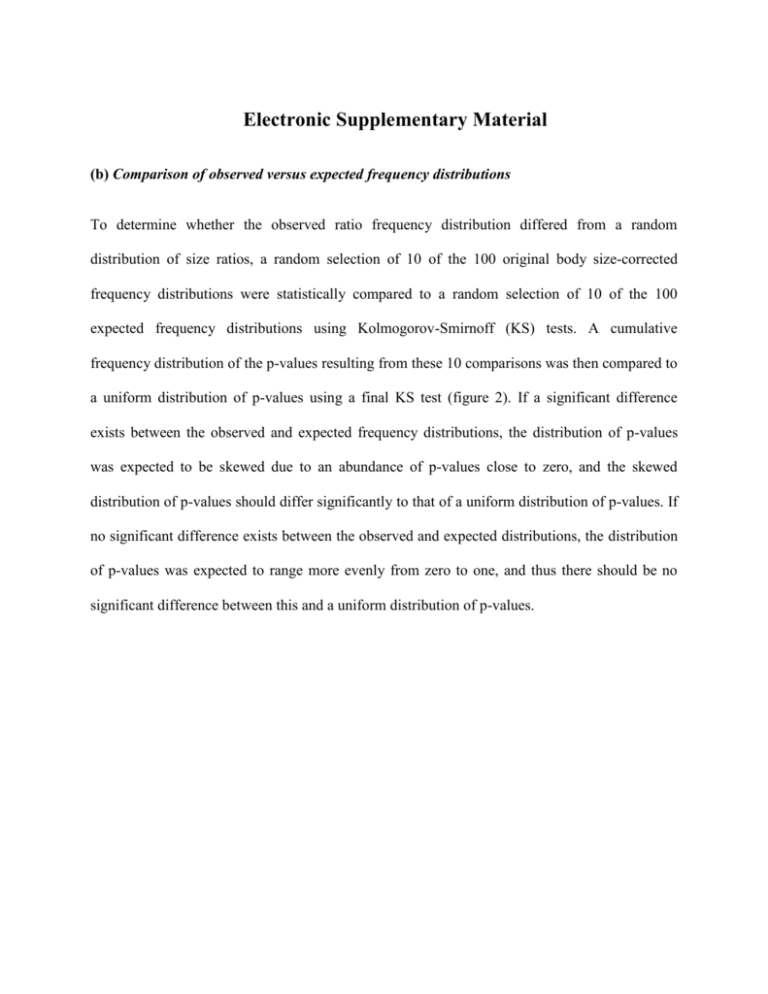
Electronic Supplementary Material (b) Comparison of observed versus expected frequency distributions To determine whether the observed ratio frequency distribution differed from a random distribution of size ratios, a random selection of 10 of the 100 original body size-corrected frequency distributions were statistically compared to a random selection of 10 of the 100 expected frequency distributions using Kolmogorov-Smirnoff (KS) tests. A cumulative frequency distribution of the p-values resulting from these 10 comparisons was then compared to a uniform distribution of p-values using a final KS test (figure 2). If a significant difference exists between the observed and expected frequency distributions, the distribution of p-values was expected to be skewed due to an abundance of p-values close to zero, and the skewed distribution of p-values should differ significantly to that of a uniform distribution of p-values. If no significant difference exists between the observed and expected distributions, the distribution of p-values was expected to range more evenly from zero to one, and thus there should be no significant difference between this and a uniform distribution of p-values. cumulative frequency 1 0.8 0.6 0.4 0.2 0 0 0.2 0.4 0.6 0.8 1 p value Figure 2. Cumulative frequency distributions of Kolmogorov-Smirnov P-values generated from 10 comparisons between the corrected observed and expected ratio frequency distributions (solid line), and from a uniform distribution of p-values (dotted line). The 2 distributions were significantly different (Kolmogorov-Smirnov test: p = 0.0007).
